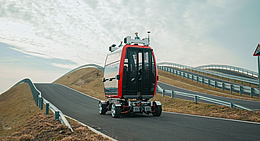It has been the number-one topic in recent years and is likely to remain an important issue for decades to come: sustainability in tourism. Tourism can impact the environment at several levels: mobility, accommodation, catering, landscaping and entertainment.
In the future, tourism will have to adapt to changing conditions and different visitor expectations as a result of climate change. Many businesses and tourism regions have already taken the first steps with regard to sustainability and now have a marketing focus on the measures taken.
However, climate change and the effects of our activities on the environment are very complex issues and not easy to communicate. In family destinations and hotels that target families in particular, careful thought is being given to how the subject can be presented to children. Communication with adult visitors is all well and good, but the topic has become so critical that it needs to be explained to children, too, in order to get them fit for the future.
How to tell a child
What activities can you undertake with children in order to teach them about sustainability? At what age do children understand the interrelationships and thus also the efforts being made to promote sustainability?
Let’s take a quick look at child psychology: the findings of the Swiss psychologist Jean Piaget, who studied cognitive development in children, are helpful here. His theories explain the thinking patterns of children at different ages:
- In the sensorimotor stage (age 0 – 2) children experience the world through their bodies. They learn that objects also exist when they do not see them.
- In the pre-operational stage (age 2 – 7) thinking is mostly concentrated on the here and now. Children do not understand complex interrelationships and do not think strategically.
- In the concrete operational stage (age 7 – 11) children can recognize concrete relationships in certain situations, and strategic thinking starts to develop. Other people’s intentions can be recognized, and children have a growing ability to plan their own actions.
- In the formal operational stage, which is the last stage of development and begins at around twelve years of age, young persons are able to think theoretically and abstractly. They no longer need visual material to do so and can consider the first strategic problems in their heads.
Children under the age of twelve (usually) do not yet understand cause-and-effect relationships. Complex topics such as sustainability or climate change must therefore be explained to them using completely different examples than in the case of adults. Adults understand that actions in the present have effects in the future. Children are not able to understand such logic, especially in their early years.
How to proceed
It is useful to work with the same age groups as Piaget in order to find the best methods for explaining sustainability to children:
- For 2-7 year old children in the pre-operational stage, the focus should be on activities in the here and now. Long explanations of theoretical questions are not helpful. While walking in the woods, for example, you can point out that litter in the forest doesn’t look nice and is also a danger to animals because they might eat it or hurt themselves. This is very concrete, and young children will understand. You can also collect litter during the walk and discuss where it has come from and how to avoid it. On an adventure trail, children in the pre-operational stage only understand what is happening right now in their immediate environment, where they are walking or standing. Sustainability activities should therefore be limited to what the child can do at that moment. In kids’ clubs or groups, it is possible to teach sustainability through various goup activities, e.g. cooking food together, simple garbage projects, up-cycling handicraft ideas, interaction with flora and fauna, and little scientific experiments.
- With 7-11 year olds in the concrete-operational stage, it is possible to discuss concrete relationships. You can talk about the future, but it should be remembered that the children’s thinking with regard to cause and effect sometimes does not yet follow adult logic. It is possible, however, to provide simple theoretical explanations about sustainability and climate change. The younger the children are, the more important it is that such explanations relate to their immediate world, i.e. activities in the home, at school or in their town. In the context of tourism, it is already possible to talk about broader topics such as forest management, the mountain climate, weather conditions or environmental protection in the mountains. Children in this age group are generally very interested in nature and keen to learn new things. Gathering knowledge is absolutely "in"! To help adults understand this target group better, I like to recommend watching educational programs on children’s television. With their creativity and humorous approach, they show how knowledge can be conveyed to this age group. Many of the programs also present aspects of sustainability in a way that children can understand and enjoy.
Small steps to make big things happen
It is obviously desirable for tourism operators to talk to children and families about the sustainability measures they have planned and implemented. Children’s projects on the mountain should specifically include this subject and show the children how the little things they do at home can make big things happen in the world around us.
Need advice on how to communicate the subject of sustainability to children and families in a fun and child-friendly way? Contact us today!

![[Translate to English:] Foto: Leitner](/fileadmin/_processed_/a/8/csm_Vertragsunterzeichnung_Narvik_6_copyright_LEITNER_print_501f2d5c24.jpg)


![[Translate to English:] (c) Doppelmayr](/fileadmin/_processed_/b/3/csm_85-ATW_Stechelberg-Muerren_Lauterbrunnen_CHE_001_6442c0520d.jpg)







